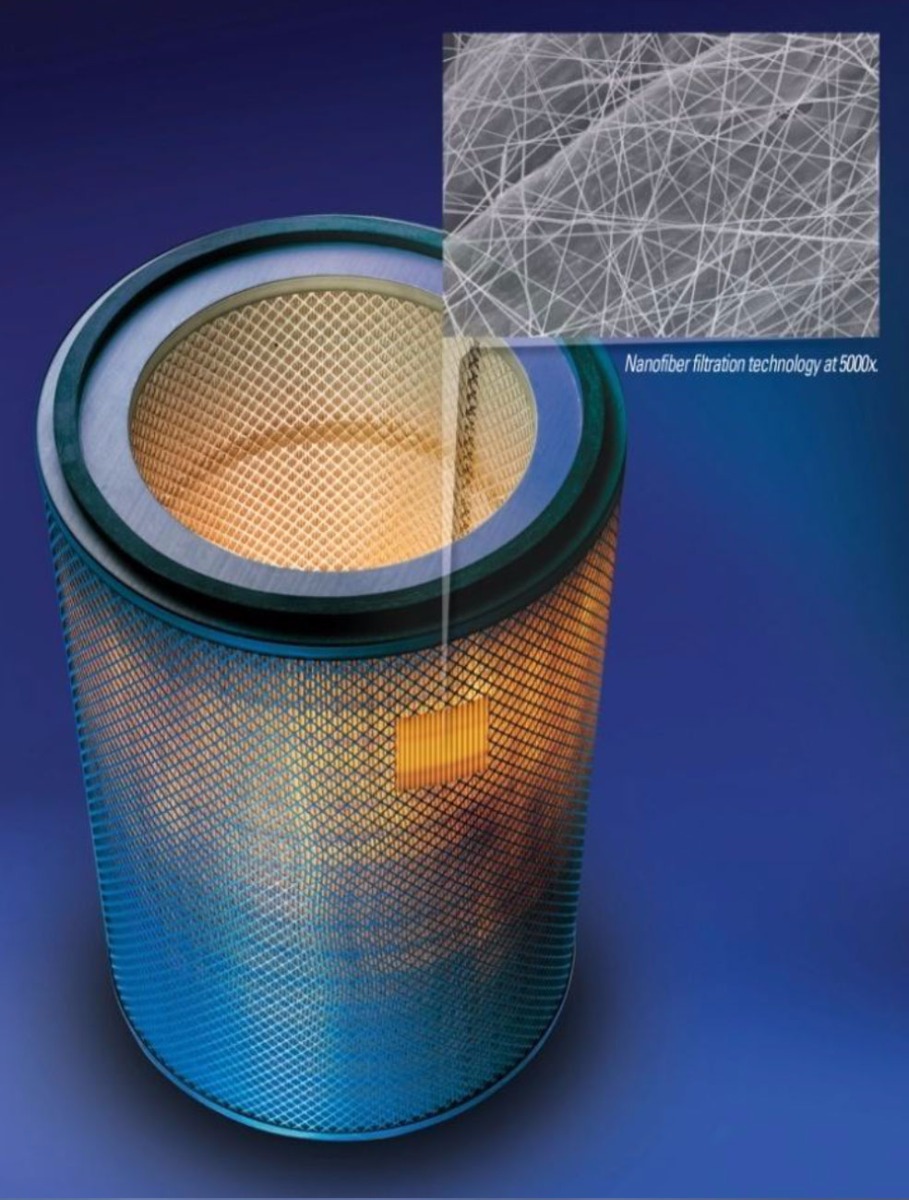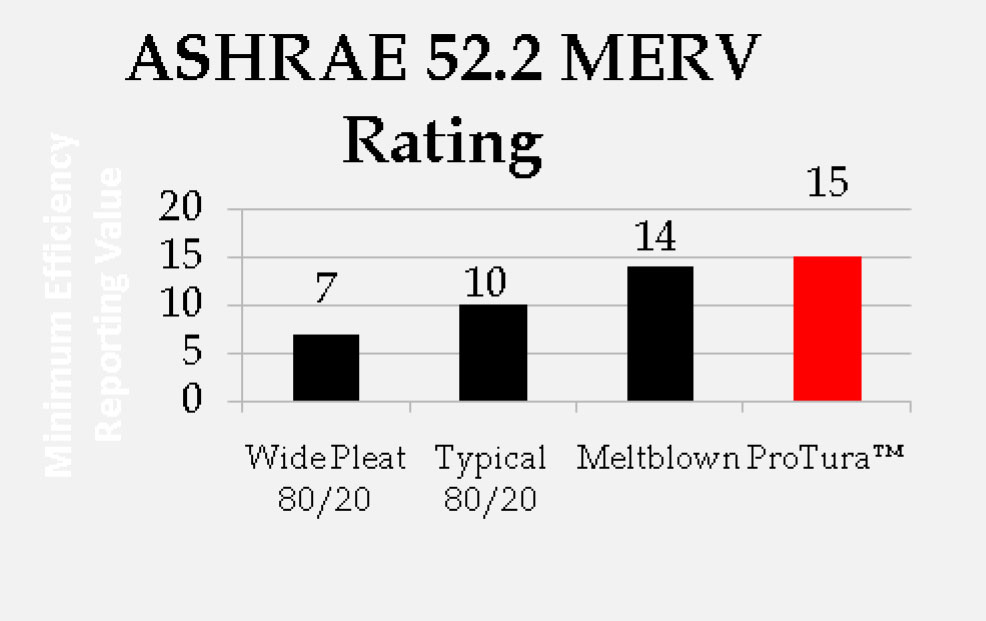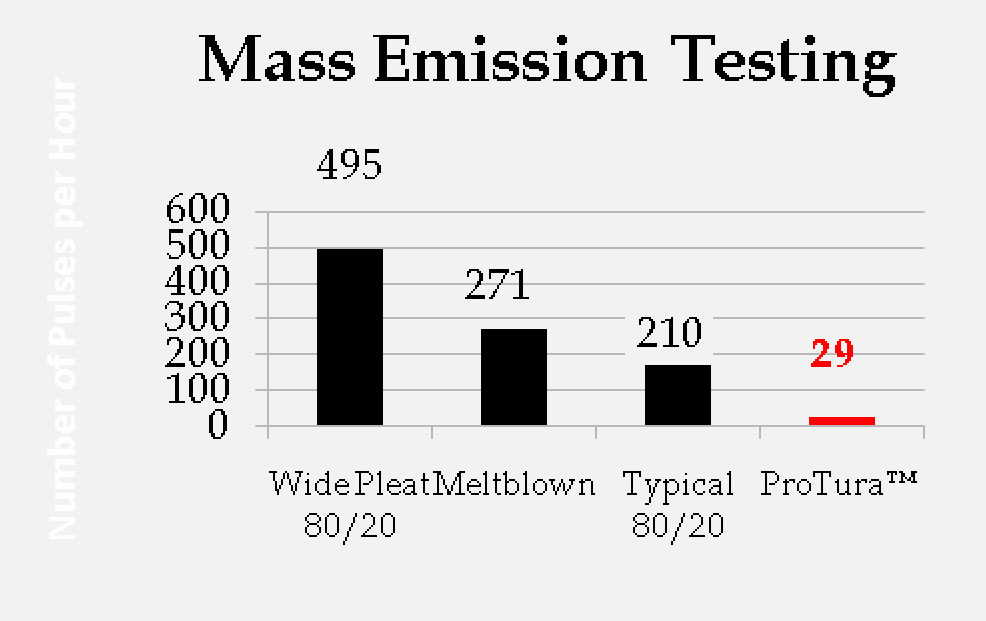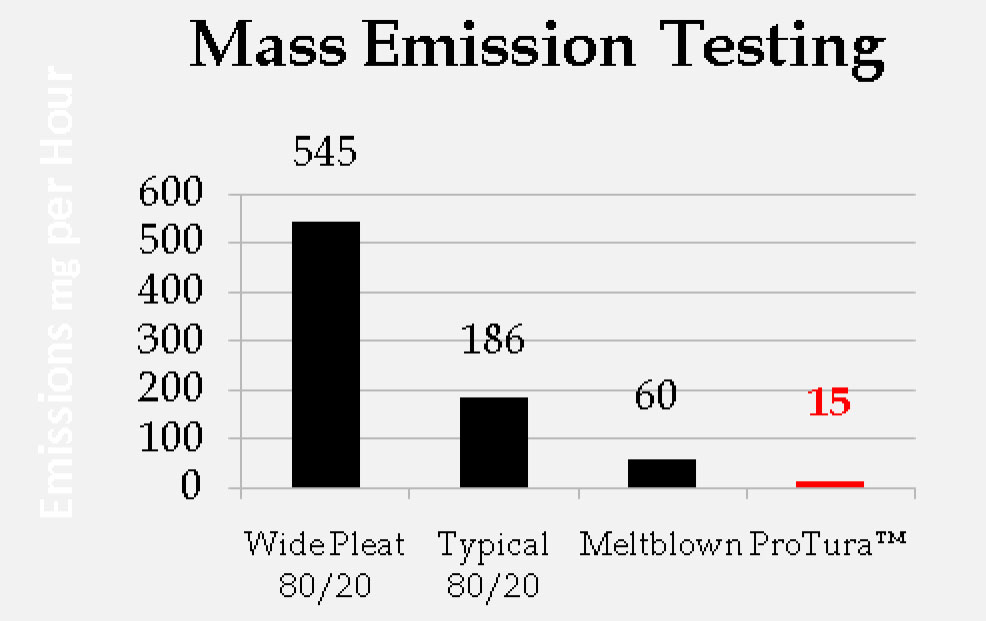ProTura™ NanofiberTechnology Outperforms Standard Cartridges
Clark Filter is manufacturing ProTura & trade; , the Most Advanced Nanofiber Filtration Technology media and pleated cartridge elements for use in most major brands of cartridge style dust collectors. Clark Filter’s ProTura Nanofiber has the finest fibers and highest MERV rating in the industry. ProTura Nanofiber Technology will increase efficiency, reduce emissions and lengthen filter service life in your cartridge style dust collector.

Features / Benefits
- The industries smallest available fibers provide the best available filtration efficiency on sub micron particulate – MERV 15
- Nanofibers allow for surface loading filtration = EASY PULSE CLEANING
- Lower initial & operating pressure drop
- Unmatched release properties will offer reduced cleaning cycles
- Saves compressed air and energy cost
- Reduced outlet emissions = Cleaner Air
- Less pulsing and stress = Longer Filter Life
- Reduced downtime
- Fewer filter changes = Lower Disposal Costs
ProTura™ Nanofiber Technology available for cartridge collectors

Independent lab tests show that Clark Filter’s ProTura™Nanofiber Technology is the only cartridge with a MERV 15 rating based on ASHRAE Test Standard 52.2. ProTura Nanofiber Technology is 50% more efficient on 0.3 – 1.0 micron particulate than the competition. Smaller diameter fibers equal a higher efficiency and lower resistance to airflow.

In full lab testing utilizing an eight (8) cartridge dust collector, Clark Filter’s ProTura Nanofiber Technology stabilized at a much lower pressure drop than the competition’s standard filter media, requiring less pulse cycles. Standard media pulsed 85 - 94% more often than ProTura™ Nanofiber Technology. Less pulsing saves compressed air and reduces stress on the filter leading to a longer filter life.

In full lab testing utilizing an eight (8) cartridge dust collector and atomite for test dust, Clark Filter’s ProTura Nanofiber Technology emitted 75 - 97% less contaminant than any standard media tested. The key is the nanofiber not the substrate. Superior submicron (0.3 – 1.0 microns) particle capture leads to lower emissions of contaminant.
